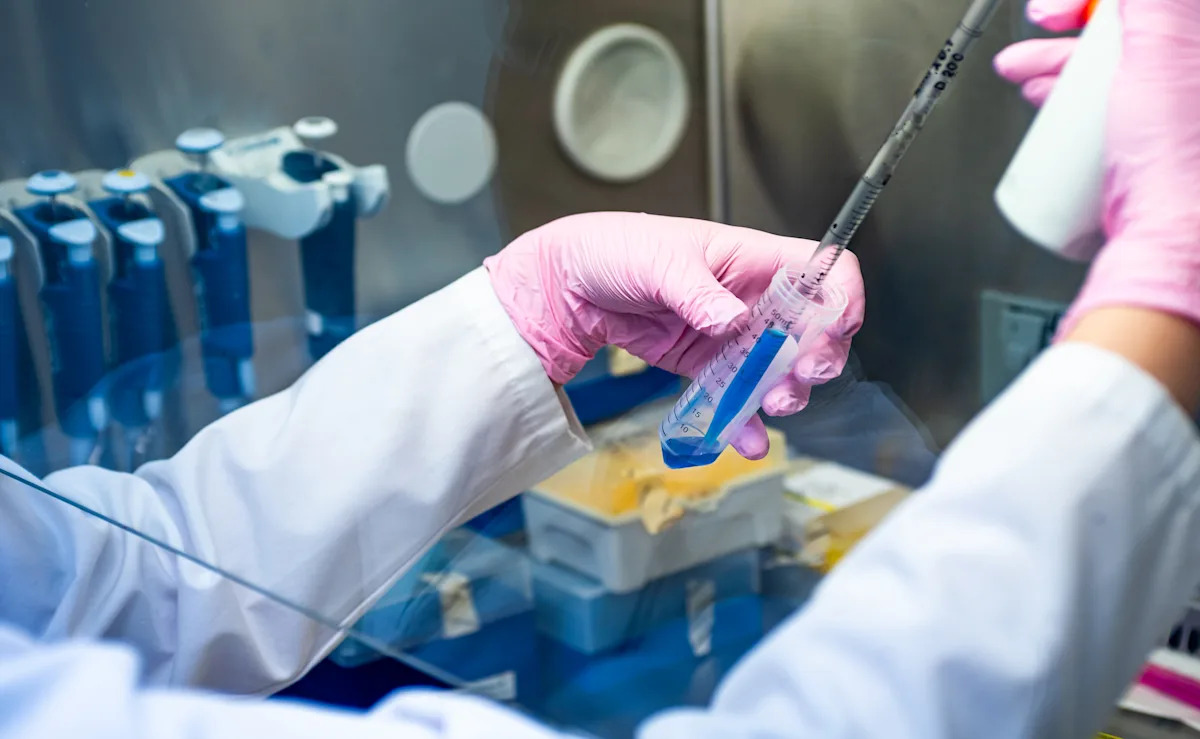Tiny plastic particles could be causing a big problem in women’s health. New research suggests microplastic pollution may play a startling role in increasing women’s reproductive cancer risks.
What’s happening?
Scientists have been increasingly concerned that microplastics — tiny particles resulting from plastic degradation — pose serious risks to human health. These microscopic particles have been detected all over the human body, including in reproductive tissue, raising alarm about their health impacts. While their widespread presence is undeniable, the full extent of their impact on human health is still being uncovered.
Now, a team of researchers in China recently published the “first systematic profiling of microplastics in endometrial cancer tissues.” According to the research, the endometrium — the lining of the uterus — may be more likely to trap microplastics because of its constant “remodeling” and many blood vessels. And that could have devastating impacts on women’s reproductive health.
For the study, scientists analyzed 32 endometrial tissue samples from cancer and cancer-free patients. Microplastics were found in every sample, showing how common the pollutant is in human reproductive tissue. But notably, the endometrial cancer tissues contained significantly higher levels of microplastics than normal — or non-cancerous — endometrial tissues.
The researchers also discovered that increased microplastic presence was strongly correlated with disruptions in “cancer-related metabolic pathways.” In other words, high concentrations of microplastics appeared to change the way cells use and process nutrients and energy. These shifts can make cells behave abnormally — growing faster, surviving longer, or evading immune defenses. All these behavior changes are hallmarks of cancer development.
Especially impacted were pathways regulating tumor proliferation and immune function, per the study. This suggests that microplastics may not only accumulate in endometrial tissues but could also contribute to processes that drive cancer progression.
Why is this finding important?
This new study suggests that microplastics could play a concerning role in the development of endometrial cancer, which is a big deal for understanding reproductive health risks. By showing how microplastics accumulate in endometrial cancer tissues and alter cell behavior, the study raises urgent questions about the broader impacts of microplastic pollution on women’s reproductive health.
The scale of human exposure to microplastics is startling. A 2020 study found that humans inhale approximately 16.2 bits of microplastics every hour. That’s the equivalent of a credit card per week. According to the Stanford Report, 10 to 40 million metric tons of microplastics are released into the environment every year. Microplastics never truly disappear, polluting water, soil, air — everything.
While scientists are still piecing together the full impact of microplastics, it’s clear these particles cause lasting harm. Harvard Medicine highlights that microplastic exposure has been linked to a range of human health impacts, including cancer, inflammation, lung and liver problems, hormone disruptions, and changes to gut microbiomes.
With new evidence connecting microplastics to reproductive cancers, the need to confront global reliance on plastics continues to increase.
What’s being done about microplastic exposure?
The researchers hope their findings can be a basis for future research into microplastics as emerging risk factors for women’s reproductive health. Right now, it’s clear more research is needed to understand the link between microplastics and reproductive cancers — along with continued research into the health implications of plastic pollution in general.
As scientists work to understand the health implications of microplastic exposure, there are already global efforts to reduce plastic usage. But given how deeply plastic is woven into daily lives, avoiding microplastics altogether isn’t realistic. The pervasive particles are everywhere — in food, water, air, and even clothes.
Still, there are simple ways to reduce your microplastic exposure. Choose clothing made from natural fibers, skip plastic food packaging, and bring reusable bags to the store instead of relying on single-use plastic bags. Since microplastics are also in the air we breathe, regular vacuuming and using a HEPA air filter can limit indoor exposure.
Join our free newsletter for weekly updates on the latest innovations improving our lives and shaping our future, and don’t miss this cool list of easy ways to help yourself while helping the planet.
First Appeared on
Source link













